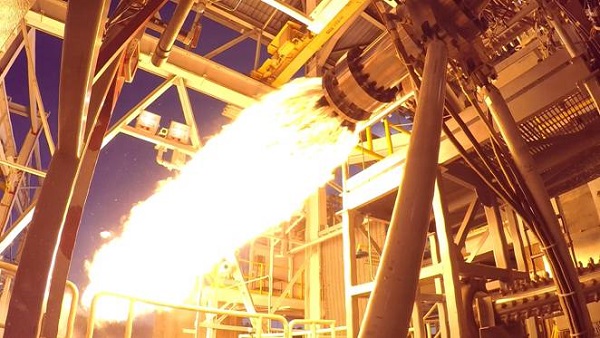There are 3 things you can do - One, shout for help (not recommended), two, loosen the knot and run, and three, wake up (highly recommended).
In practical, we and every other thing that exists in and around us, are in a scenario that is somewhat similar to the short thriller above. As 'precisely' explained by Universe Today,
There’s a strange place in the sky where everything is attracted. And unfortunately, it’s on the other side of the Milky Way, so we can’t see it.
The fun part is, none of us know what type of celestial body it is, or whether it is a celestial body at all!
From all that has been detected and analyzed, currently we're moving at a speed of 13,42,162 miles per hour or 6,00,000 metres per second towards it! SNAP and you move six lakh metres towards the gravitational abnormality known as The Great Attractor located near the center of Laniakea supercluster.
 |
| Artist's Impression of The Laniakea Supercluster and the position of Milky Way in it. (Credit: Medium.com) |
(A supercluster is a bunch of galaxies clustered with similar other bunches.)
Summing up, the Great Attractor is a location in space that's pulling every single thing towards it. So, the question pops up - How did we get to know of its presence?
What's that thing?
The Big Bang is widely accepted as the moment of birth of our Universe. The Universe, at that time, was rapidly inflating with enormous production of heat and about 4,00,000 years later, vast amount of radiation spread all over the space.
Today, about 13.8 billion years since that event, the leftover radiation has been found out to be travelling through space in the form of microwaves. In 1965, upon testing their radio receiver, Arno Penzias and Robert Wilson, noticed that it was picking up a noise, that too, uniformly from all over the sky! Normally, it would've been termed as a glitch and 'case closed', but that's not how the scientists do it. Robert Dicke, at the same time, was experimenting on radiation in space that traces back to the early hot phase of the Universe. As a combined contribution of these scientists, the remnant of radiation left over from the Big Bang was detected and hence termed as Cosmic Microwave Background Radiation or CMBR.
The discovery of the Great Attractor dates back to the 1970s when scientists, for the very first time, made a detailed map of the CMBR and noticed an unusual thing - one side of the Milky Way was slightly warmer than the other. So, what's the big deal? The Universe is homogeneous at large scale and it is also evident that the Universe is expanding so, an uniformity is expected, but the CMBR observation contradicts both, further letting us know that we've been moving at a speed of 600 km/s towards Centaurus constellation. It's not only us, but also every other celestial entity, within 100's of millions of light years of us, are headed towards the same direction. We are all in this together!
 |
| Region of sky where the Great Attractor is located. (Credit: Hubble Space Telescope/NASA) |
A consequence of the existence of the Great Attractor is that even though the Universe is expanding, with each of it's components moving away from one another, yet we now know that Andromeda galaxy is destined to collide with our Milky Way galaxy in about four billion years.
Let's Observe
As much of a wonder this gravitational anomaly is, viewing it is equally difficult as it lies in the Zone of Avoidance.
Stars+Gas+Dust+More gas and dust=Zone of Avoidance
Astronomers find it seemingly difficult to view a particular area of the night sky - the area guarded by the Milky Way itself, beyond which the Great Attractor lies. Shrouded by stars, dust and gas, this region of the night sky is the Zone of Avoidance.
Much of the visible light is blocked by this region, but that is not in the case of infrared radiation and X-ray. With the emergence of X-ray astronomy, astronomers can now view the Great Attractor! 'Great' news indeed, but it's just a 'hazy, uncertain patch' of galaxies that lies beyond the Milky Way so, we've not viewed the Great Attractor explicitly, but rather we've been able to view the possible region in it.
The cluster of galaxies observed, using X-ray, is known as Norma Cluster, constituting thousands of galaxies and having a mass of about 1000...trillion...Suns! Just for information, a trillion has 12 zeroes so, do the math.
If you've figured out the hierarchy, here's something to add to it - the Norma Cluster, with all of it's members are a part of the Laniakea Supercluster which is being attracted towards a yet larger cluster, this one has more than 8000 galaxies in it (let's keep the mass unsaid), literally every galaxy in our Universe is moving towards it, it's known as Shapley Supercluster.
 |
| The Shapley Supercluster. (Credit: ESA) |
A possible question that can arise - If Shapley Supercluster is attracting the Great Attractor itself, then how come the latter is 'most dominating entity'?
The answer is somewhat like this - On a smaller scale, that is, within our supercluster, Laniakea, the Great Attractor is dominating and on a fairly larger scale, that is, in a combination of superclusters, the Shapley Supercluster is considered to hold that title. From what has been observed, it is assumed that the Great Attractor is essentially a collection of galaxies that is apparently hidden. However, it is thought to be the gravitational center of the Laniakea Supercluster, as a 'place' where material is collected from celestial bodies by virtue of the immense gravitational pull.
So let's get to the popular question - Will the Great Attractor be responsible for the end of us?
The answer is no. We will not be sucked into the Great Attractor, credit goes to Dark Energy because it will eventually separate the Norma Cluster away from us and soon the Laniakea supercluster will be disintegrated, that's how it has always been, but the clusters will remain intact. Neither the Great Attractor is a supermassive black hole, nor it has to do anything with the world's end, it's a mystery that is slowly unfolding itself and we continue to study it for understanding our position and to some extent, our fate in this 'Grand system'.
Summary of Attraction
(⊆->subset)
You reading this article⊆Earth⊆Solar System⊆Milky Way Galaxy⊆Group of Galaxies.
The Great Attractor attracts this group of galaxies with the celestial bodies in the Milky Way Galaxy experiencing the maximum pull since it is in the anomaly's vicinity.
Group of Galaxies⊆Norma Cluster⊆Laniakea Supercluster.
Shapley Supercluster attracts Laniakea Supercluster, Norma Cluster experiencing a fair amount of pull, alongwith other superclusters in the Filament.
Also check out the following blogs:





4 Comments
Excellent stuff vro
ReplyDeleteThanks bro!
DeleteGood information....
ReplyDeleteThank you! Do check out the related articles.
Delete